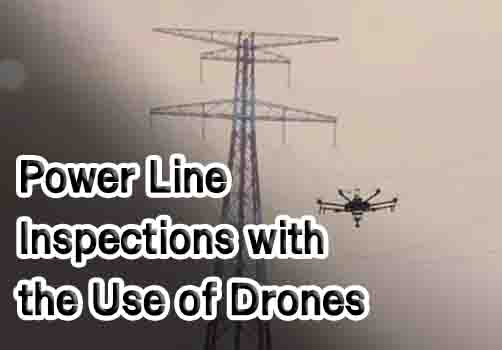Power line inspections are essential to ensure the safety and reliability of power distribution systems. These traditionally required teams of inspectors to climb power poles and visually inspect power lines, which was both time-consuming and dangerous. However, with the advent of drone technology, power line inspections have become significantly safer and more efficient. This article will discuss all you need to know about powerline inspection with drones.
Table of Contents
Advantages
They can inspect much faster than traditional methods, which helps utilities save time and money. Instead of a team spending several days inspecting, it can complete the assessment in a matter of hours. They can capture high-resolution images and videos of power cables, which can be used to identify potential issues before they become significant problems. This enables utilities to take corrective action before a power outage occurs.
The cost can be much cheaper than orthodox methods. They do not require as much workforce or specialized equipment, which can significantly reduce costs.
How They are Used
The most important step in powerline inspection is to plan the flight path. This involves identifying the areas needing inspection, the location, and any potential obstacles or hazards. Before it takes off, it undergoes a series of pre-flight checks to ensure it is safe to operate. This includes checking the battery level, the GPS signal, and the camera.
Once it is ready, it takes off and flies along the pre-determined flight path. It captures high-resolution images and videos of the power lines using its camera. After the flight is complete, the images and videos captured by the drone are analyzed using specialized software. This software can identify potential issues, such as corrosion or damage. The final step is to generate a report outlining any issues identified.
Regulatory Requirements
In the United States, the use of drones for such purposes is subject to regulatory requirements to ensure safe and legal operations. The regulatory framework for drone operations in the US is overseen by the Federal Aviation Administration (FAA), which has established rules and regulations for drone operations in the National Airspace System (NAS).
Here are the regulatory requirements:
- Drone Pilot Requirements: They must obtain a Remote Pilot Certificate issued by the FAA. To get this certificate, pilots must be at least 16 years old, pass a knowledge test, and undergo a security background check. To maintain their certificate, pilots must also pass a recurrent knowledge test every two years.
- Drone Technical Requirements: It must meet technical requirements set by the FAA. These requirements include a maximum weight limit of 55 pounds, a maximum altitude limit of 400 feet above ground level, and a top speed limit of 100 mph. It must also be equipped with anti-collision lighting for operations during low-light conditions.
- Flight Planning: Pilots must follow FAA regulations for flight planning, which include submitting a flight plan to the FAA for operations in controlled airspace and providing prior notice to airports for operations within 5 miles of an airport. In addition, they must ensure they have proper authorization to fly in any restricted airspace.
- Safety Measures: Flyers must take appropriate safety measures to ensure the safety of people, property, and other aircraft. This includes maintaining a safe distance from people and property, using proper safety equipment, and following standard operating procedures. They must also be familiar with emergency procedures and be prepared to handle unexpected situations.
- Permission from Local Authorities: Operators must obtain permission before flying drones in a specific location. This is particularly important for power line inspections as the operation may affect nearby residential areas, wildlife, or other sensitive areas.
In conclusion, their use is an important innovation that has revolutionized how reviews are carried out. However, their use is subject to regulatory requirements, and operators must comply with these requirements to ensure safe and legal operations.

